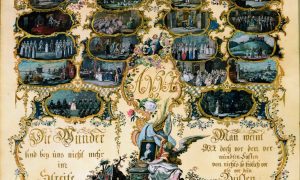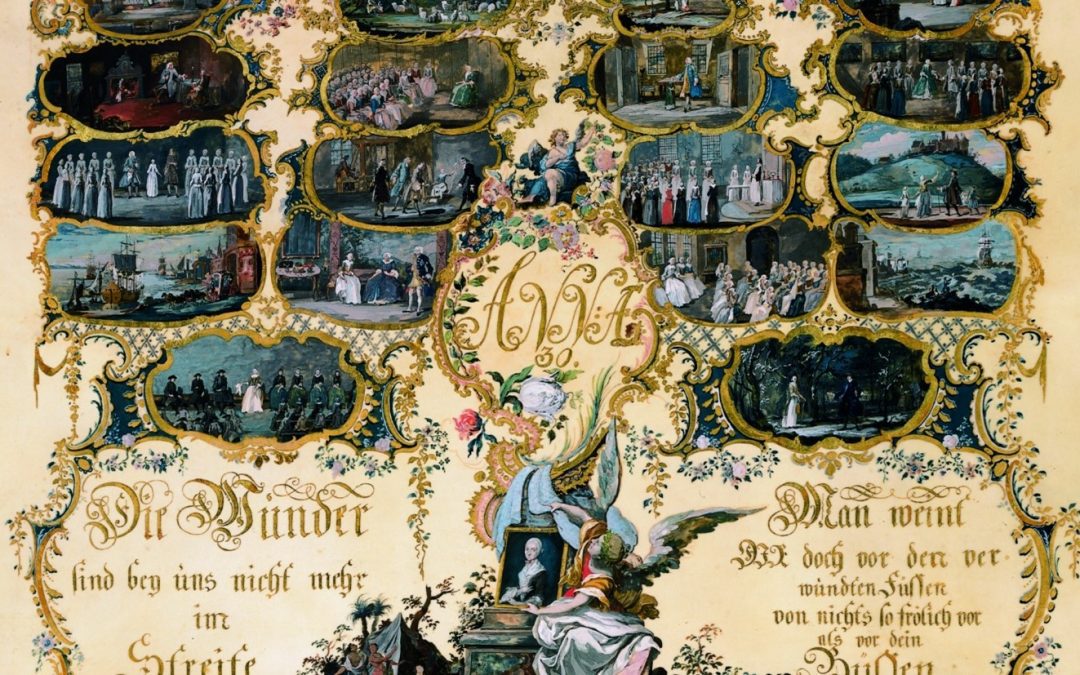Anna started life in a small village in Moravia where life was both peaceful and traumatic. As an adult, she became a role model for women by taking on key roles and demonstrating leadership in the revived Moravian Church.
https://elizabethwe.co.uk/annas-story-life-as-a-refugee/ As we saw in this story of being a refugee, her family settled on land owned by Count Zinzendorf. Having spent a few years working as a domestic servant in Berthelsdorf, the family moved a few miles up the track to live in Herrnhut.
Life in the early days of Herrnhut was not always harmonious. To help encourage peaceful living, Count Zinzendorf had introduced an agreement that set out the basic principles that all should follow. In 1730 he introduced ‘Choirs’, no these were not for singing, although Moravians love a good sing. The Choirs were houses for groups of people to live together. One such Choir was for single Sisters[1]. Although Zinzendorf was keen that the young Anna should set up the Single Sisters’ Choir, all such decisions had to be decided by the congregation.
In fact, Anna was chosen despite not everyone supporting her. Showing qualities of leadership even the young age of fifteen, she wrote a letter to the congregation in which she said: I know not what our Saviour’s purpose may be in leading me thus, and I feel my unworthiness. I desire, however, to be obedient to our Saviour, and hope the congregation will be satisfied.
So, she was recognising some folks disquiet and stating that she hoped they would accept her efforts. And they did.
It was also worth reflecting on why Zinzendorf felt these Choirs would be useful and so what faced Anna in setting up one for single sisters. Like her, most of these young girls will have experienced persecution and been refugees as young children; this means they will have left their home and possibly family and friends before settling in Herrnhut. Also, they will have travelled from different parts of Europe and so may not have share any common history, or even language.
Forming friendships, overcoming trauma and learning a new language were vital for each of them. Living together would offer them space and support. Importantly, it would allow them to decide if and when they wished to marry. It is recorded that setting up a Choir for these girls was controversial and some men left the community[2]. For the girls, it ensured they were not pressed into early marriages.
Being young and a woman may suggest she was unsuitable for a leadership role. However, this was Anna’s first leadership role at such an early age and it certainly presented plenty of challenges for her.
By her 30th birthday Anna had gained widespread support among women, in both Herrnhut and other Moravian settlements. We know this because for her birthday she was presented with a beautiful picture that captures eighteen scenes from her life. Later she was seen as the ‘Mother of the Church’. Quite an achievement for a young refugee.

Picture given to Anna on her 30th birthday. It shows different scenes from her life.
https://katiefaull.com/2018/03/09/anna-nitschmann-in-the-world/
The work of Anna was then taken up across other Moravian settlements. By 1748, Moravians had established Choir houses for Single Sisters in every major Moravian settlement in Europe. So it is not surprising that Moravians also established one in Bethlehem, their first substantial settlement in America. Today many settlements still have Sisters’ Houses, although often men now live in them too!

Picture of the entrance to the Sisters House Fulneck
During her life Anna also introduced a Sisters’ Festival, still celebrated in many Moravian Churches today. She became a deaconess in the church and then became the second wife to Count Zinzendorf. Perhaps we will hold that for a future story.
Let us close today by asking why Anna Nitschmann is still important? For women today she can act as a role model – as a female leader, as the composer of hymns, as a woman who not only valued the agency of women but who worked with single women throughout most of her life to ensure that they saw their own strength and value. Throughout her life she put into practice her faith and encouraged others in their faith. Next time we will also reflect upon her significant work in America; time to get that case packed and prepare for a long sea crossing.
As always, I am happy to hear your comments and questions. Also, if you are looking for a speaker please get in touch: I have various talks to suit different interests and different groups. All money raised goes to the MWA.
Mary Holmes.
[1] All women in the Moravian Church are Sisters. All men are Brethren. It is to highlight the importance of being part of a strong community – a family.
[2] Herrnhut: 1722-1732. Paul Peucker, p. 176.


Recent Comments